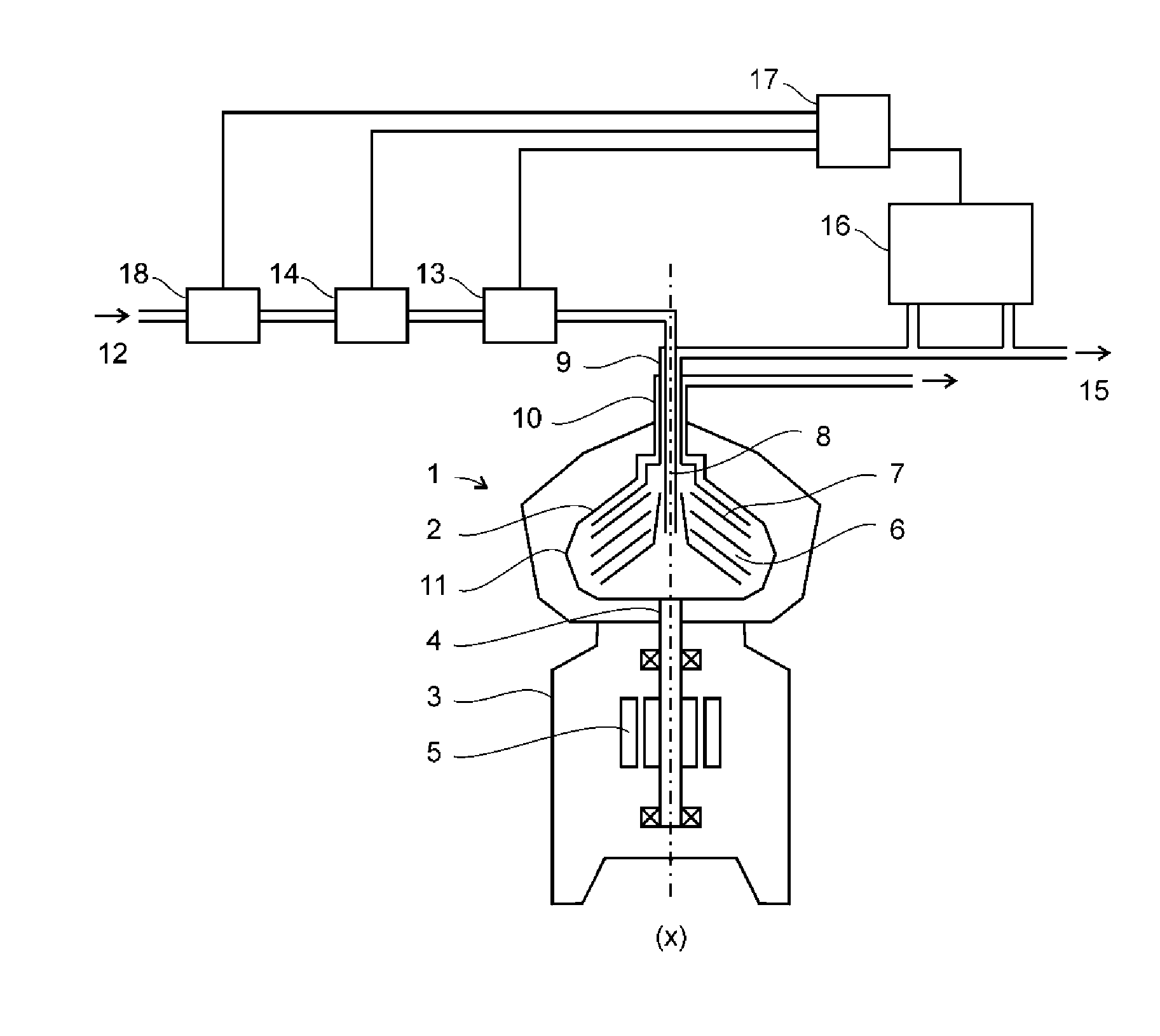Method and system for separating catalyst fines from an oil stream
a technology of catalyst fines and oil stream, which is applied in the direction of centrifuges, analysis using nuclear magnetic resonance, fuels, etc., can solve the problems of long term accumulation of catalyst fines on the bottom of fuel oil bunkers, difficult cleaning by conventional methods, wear of engine and auxiliary equipment, etc., to reduce the risk of engine damage and reduce the amount of catalyst fines
- Summary
- Abstract
- Description
- Claims
- Application Information
AI Technical Summary
Benefits of technology
Problems solved by technology
Method used
Image
Examples
Embodiment Construction
[0065]In FIG. 1 a system is shown comprising a centrifugal separator 1 for separating a liquid mixture of components, such as fuel oil contaminated with water and catalyst fines. The centrifugal separator comprises a rotor 2 supported by a spindle 4 which is rotatably arranged in a frame 3 around an axis of rotation (x). The separator comprises a drive motor 5, which may be arranged to drive the spindle in direct connection as shown or indirectly via a transmission such as belts or gears. The rotor forms within itself a separation chamber 6 wherein a stack of frustoconical separation discs 7 is arranged. An inlet 8 extends into the separation space for supply of the liquid mixture to be separated and a light phase outlet 9 for a separated light liquid component of the mixture (i.e. the purified oil) extends from the central portion of the separation chamber. A heavy phase outlet 10 for a separated heavy liquid component of the mixture (e.g. water and separation aid) extends from a p...
PUM
| Property | Measurement | Unit |
|---|---|---|
| molecular weight | aaaaa | aaaaa |
| temperature | aaaaa | aaaaa |
| temperature | aaaaa | aaaaa |
Abstract
Description
Claims
Application Information
 Login to View More
Login to View More - R&D
- Intellectual Property
- Life Sciences
- Materials
- Tech Scout
- Unparalleled Data Quality
- Higher Quality Content
- 60% Fewer Hallucinations
Browse by: Latest US Patents, China's latest patents, Technical Efficacy Thesaurus, Application Domain, Technology Topic, Popular Technical Reports.
© 2025 PatSnap. All rights reserved.Legal|Privacy policy|Modern Slavery Act Transparency Statement|Sitemap|About US| Contact US: help@patsnap.com


